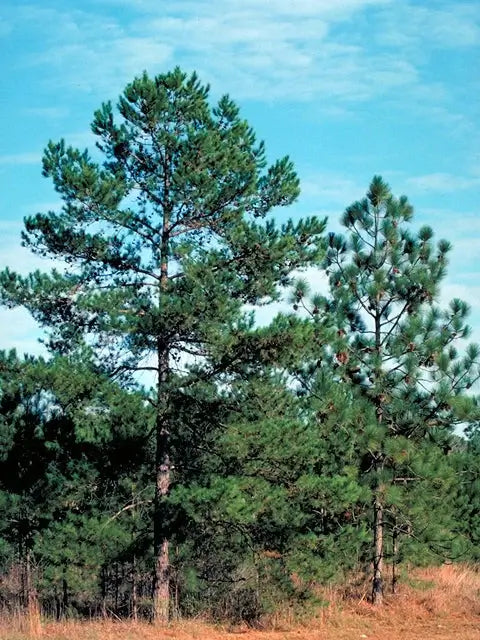Pitch Pine Trees Description
Pitch pine trees are evergreen, cone-bearing perennial plants native to eastern North America. They grow in the areas surrounding the northeastern United States and up into Canada. The name "pitch" is due to the sticky sap these plants produce. Pitch pine trees typically have long cones made up of very prickly scales. The trees can grow well in poor soil and drought conditions, which makes them ideal for firewood and cedar posts.
Habitat.
Pitch Pine trees like dry areas such as thin soils, rocky ridges, and sandy barrens; they grow in many soil types, including acid rocks and gravel to alkaline loam. They also grow well in thin or rocky soils! Their preferred habitat is on ridges or south slopes facing outcrops of acidic rocks.
Identifying Pitch Pine Trees: What to Look For
Pitch pine trees typically grow around 15m high and have gray to brown bark with long leaves that always sit in a V-shape. They grow in large, bushy clusters and can be identified by their thick, prickly cones. The trees produce a sticky resin called pitch that is useful for starting fires and preventing fungi from growing on logs.
Where to Find Pitch Pine Trees: Growing Regions
Pitch pine trees are evergreen, cone-bearing perennials native to eastern North America. Pitch pine trees are adapted to the acidic soils of the northeastern United States but can also be found in Canada. The trees can survive poor soil conditions and drought, which makes them ideal for use as firewood or cedar posts.
Most Common Uses for Pitch Pine Trees: Common Uses
Pitch pine trees are most commonly used for firewood and post-cedar applications. The trees can also create a natural fence around a garden or property.
Interesting facts about Pitch Pine Trees:
1) Resin is a sap that oozes out of certain coniferous trees, particularly those in the Panacea family, such as the Pitch Pine. It is generally considered a nuisance for people that work with trees, but it can also be highly beneficial and has many uses! The resin from the Pitch Pine tree is used to make turpentine and rosin.
2) Another interesting fact about the Pitch Pine Trees is that it makes a great living fence. It is due to the resin that flows from the tree's bark and surrounding twigs, which helps ward off predators such as insects or herbivorous mammals.
3) Pitch Pine Tree cones are about 1 inch long and have prickly scales, making them difficult for many animals to grasp. They also produce a tiny resin droplet at the base of each scale.
4) Pitch Pine Trees grow in dense thickets or clusters. They can grow naturally as one or more trees among various deciduous and coniferous forest species, including maple and oak trees! The maple trees they surround themselves with provide the Pitch Pine Tree with excellent protection and shade, so you will find them growing in forested areas.



















































